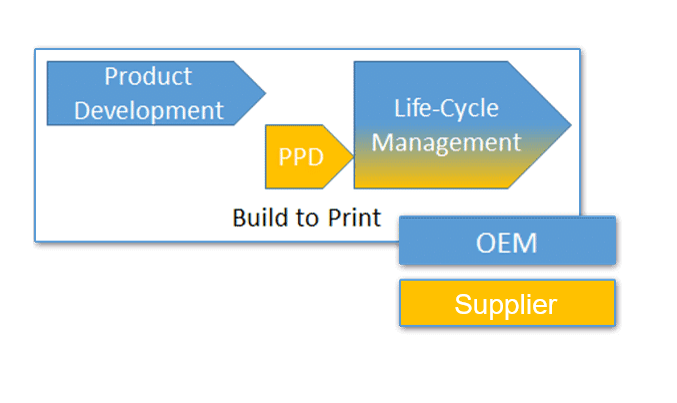About the model
Introduction Build to Print
In Build to Print, the OEM outsources production based on a completed design, captured in the technical product documentation (e.g., engineering drawings and software). Implicitly or explicitly, the OEM has made assumptions during the design proces about the required manufacturing processes. The supplier translates that documentation into the best possible production processes and sets up its factory and supply chain on that basis.

Life-Cycle Management will be done primarily by the OEM, with the exception of production related Life-Cycle Management (e.g. obsolescence management).
Characteristics of the model
Time to market – Quality – Total Cost of Ownership
In this build to print model, suppliers can be compared based on these three criteria. It is recommended that the supplier is asked for an analysis of the product design and suggestions for possible design changes to achieve a better mix of these three criteria.

Quality
Quality – Optimal coordination of product design and production process leads to a product with the highest possible quality and delivery reliability.

Total Cost of Ownership
Total Cost of Ownership – The alignment between product design and manufacturing process leads to the lowest possible product cost. In addition, this early alignment can save costs through higher product quality. Higher quality leads to fewer complaints and lower cost-of-non-quality.

Organization
Organization – The interaction required can be kept to a minimum. The OEM designs, the supplier produces, and the purchasing and sales organizations respectively organize the necessary contracts.


